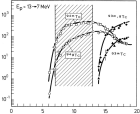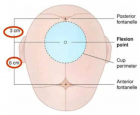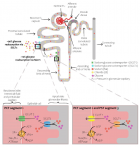Abstract
Research Article
Thirty days post-operative complications after Sleeve Gastrectomy, Gastric Bypass and Mini Gastric Bypass/one Anastomosis Gastric Bypass. Analysis of the Italian Society for Bariatric Surgery and Metabolic Disorders (S.I.C.OB.) database of 7 years time frame
Maurizio De Luca*, Nicola Clemente, Cristiana Visentin, Natale Pellicanò, Cesare Lunardi, Alberto Sartori, Gianni Segato, Luigi Angrisani, Marcello Lucchese5 and Nicola Di Lorenzo
Published: 24 October, 2017 | Volume 1 - Issue 1 | Pages: 062-071
Background: To date, the scientific community has mainly focused on outcomes of obesity surgery such as weight loss and resolution of associated complications. Adverse post-operative events and reoperation rates have been poorly reported even if they are a marker of surgical safety and therefore of great importance in guiding patients and surgeons in the choice of the more suitable operation.
Methods: This retrospective multicenter observational study is based on the data extracted from the Italian Society of Bariatric Surgery and Metabolic Disorders (S.I.C.OB.) database, which covers almost all the bariatric operations performed in Italy. We analysed the 30 days post-operative complications occurring, in the period from 2009 to 2015, after Roux-en-Y Gastric Bypass (RYGB), Sleeve Gastrectomy (SG) and Mini Gastric Bypass/One Anastomosis Gastric Bypass (MGB/OAGB) qualitatively, quantitatively and on the basis of the Clavien-Dindo classification of surgical complications. Complications following surgeries were tested using the 95% confidence interval. Statistical analysis was performed with Statistical Analysis System (SAS).
Results: In the 2009-2015 time frame, a total of 31,624 operations were performed of which 6,864 RYGB, 10,833 SG and 992 MGB/OAGB. The complication rate was 4.39 %, 4.04 % and 3.83% respectively. The most frequent complications were hemoperitoneum (0.9%) and perforation, fistula and dehiscence (1%) which were higher in SG when compared with RYGB (with a statistical significance) and when compared with MGB/OAGB (without a statistical significance). When dividing the complications by the different grades of the Clavien-Dindo classification, the only significant difference encountered, from a statistical standpoint, was between MGB/OAGB and SG. MGB/OAGB was associated with a lower grade I Clavien-Dindo complication rate (1.31% versus 2.34%).
Conclusion: This study supports a safe profile of obesity surgey in Italy, along with positive bariatric outcomes. The rate of 30 days post-operative complications is progressively lower after MGB/OAGB (3.83%), SG (4.04%) and RYGB (4.39%) respectively. In particular, MGB/OAGB records statistically less low-grade Clavien-Dindo complications compared to SG and RYGB.
Introduction
Read Full Article HTML DOI: 10.29328/journal.ascr.1001011 Cite this Article Read Full Article PDF
Keywords:
Clavidien-Dindo classification; Early complications; Sleeve gastrectomy; Roux-en-Y Gastric Bypass; Mini Gastric Bypass; S.I.C.OB. database
References
- Rutledge R. The mini-gastric bypass: experience with the first 1274 cases. Obes Surg. 2001; 11: 276-280. Ref.: https://goo.gl/zMsvGU
- Dindo D, Demartines N, Clavien PA. Classification of surgical complications: a new proposal with evaluation in a cohort of 6336 patients and results of a survey. Ann Surg. 2004; 240: 205-213. Ref.: https://goo.gl/ZiGyxy
- Colquitt JL, Pickett K, Loveman E, Frampton GK. Surgery for weight loss in adults. Cochrane Database Syst Rev. 2014; 8. Ref.: https://goo.gl/XHMxZS
- Dogan K, Gadiot RP, Aarts EO, Betzel B, van Laarhoven CJ, et al. Effectiveness and Safety of Sleeve Gastrectomy, Gastric Bypass, and Adjustable Gastric Banding in Morbidly Obese Patients: a Multicenter, Retrospective, Matched Cohort Study. Obes Surg. 2015; 25: 1110-1118. Ref.: https://goo.gl/HsgC9K
- Himpens J, Dapri G, Cadiere GB. A prospective randomized study between laparoscopic gastric banding and laparoscopic isolated sleeve gastrectomy: results after 1 and 3 years. Obes Surg. 2006; 16: 1450-1456. Ref.: https://goo.gl/u8Jxy7
- Chevallier J M, Arman G, Guenzi M, Rau C, Bruzzi M, et al. One Thousand Single Anastomosis (Omega Loop) Gastric Bypasses to Treat Morbid Obesity in a 7-Year Period: Outcomes Show Few Complications and Good Efficacy. Obes Surg. 2015; 25: 951-958. Ref.: https://goo.gl/t1pq6Y
- Garofalo F, Denis R, Abouzahr O, Garneau P, Pescarus R, et al. Fully Ambulatory Laparoscopic Sleeve Gastrectomy: 328 Consecutive Patients in a Single Tertiary Bariatric Center. Obes Surg. 2015; 26: 1429-1435. Ref.: https://goo.gl/f5eTY6
- Clough A, Hamill D, Jackson S, Remilton M, Eyre R, et al. Outcome of three common bariatric procedures in the public sector. ANZ J Surg. 2016. Ref.: https://goo.gl/BfLCS7
- Georgiadou D, Sergentanis TN, Diamantis T, Tsigris C, Psaltopoulou T, et al. Efficacy and safety of laparoscopic mini gastric bypass. A systematic review. Surg Obes Relat Dis. 2014; 10: 984-991. Ref.: https://goo.gl/HQJRgJ
- Falk V, Twells L, Gregory D, Murphy R, Smith C, et al. Laparoscopic sleeve gastrectomy at a new bariatric surgery centre in Canada: 30-day complication rates using the Clavien-Dindo classification. Can J Surg. 2016; 59: 93-97. Ref.: https://goo.gl/i7bZSn
- Rojhani-Shirazi Z, Amini M, Meftahi N, Seperhrimesh M, Poorbaghi SL, et al. Comparison of aanthropometric measures in people with and without short-and long-term complications after laparoscopic sleeve gastrectomy. Comparative Clinical Pathology. 2017: 26: 1375-1379. Ref.: https://goo.gl/qyHn4a
- Amini M, Vafa L, Poorbaghi SL, Seperhrimesh M. Obesity and Weight Loss Therapy. J Obesity and Weight Loss Therapy. 2016; 6: 4.
- Peraglie C. Laparoscopic mini-gastric bypass (LMGB) in the super-super obese: outcomes in 16 patients. Obes Surg. 2008; 18: 1126-1129. Ref.: https://goo.gl/sgfvu7
Figures:
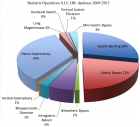
Figure 1

Figure 2
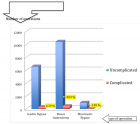
Figure 3
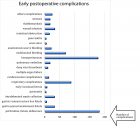
Figure 4
Similar Articles
-
Thirty days post-operative complications after Sleeve Gastrectomy, Gastric Bypass and Mini Gastric Bypass/one Anastomosis Gastric Bypass. Analysis of the Italian Society for Bariatric Surgery and Metabolic Disorders (S.I.C.OB.) database of 7 years time frameMaurizio De Luca*,Nicola Clemente,Cristiana Visentin,Natale Pellicanò,Cesare Lunardi,Alberto Sartori,Gianni Segato,Luigi Angrisani,Marcello Lucchese5,Nicola Di Lorenzo. Thirty days post-operative complications after Sleeve Gastrectomy, Gastric Bypass and Mini Gastric Bypass/one Anastomosis Gastric Bypass. Analysis of the Italian Society for Bariatric Surgery and Metabolic Disorders (S.I.C.OB.) database of 7 years time frame. . 2017 doi: 10.29328/journal.ascr.1001011; 1: 062-071
-
Biliary reflux gastritis after Mini Gastric Bypass: The effect of Bilirubin levelMohamed Lasheen, Mohamed Mahfouz,Tamer Salama*,Hossam El-Deen M Salem. Biliary reflux gastritis after Mini Gastric Bypass: The effect of Bilirubin level. . 2019 doi: 10.29328/journal.ascr.1001028; 3: 027-031
-
Leakage after sleeve gastrectomy: Endoscopic stenting VS surgical interventionMohamed Salah Abdelhamid*,Ahmed Zaki Gharib,Mohammed Abdelaal Mohammed, Tarek Mahmoud Ibraheem El Gindy. Leakage after sleeve gastrectomy: Endoscopic stenting VS surgical intervention. . 2020 doi: 10.29328/journal.ascr.1001049; 4: 029-034
Recently Viewed
-
Adult Neurogenesis: A Review of Current Perspectives and Implications for Neuroscience ResearchAlex, Gideon S*,Olanrewaju Oluwaseun Oke,Joy Wilberforce Ekokojde,Tolulope Judah Gbayisomore,Martina C. Anene-Ogbe,Farounbi Glory,Joshua Ayodele Yusuf. Adult Neurogenesis: A Review of Current Perspectives and Implications for Neuroscience Research. J Neurosci Neurol Disord. 2024: doi: 10.29328/journal.jnnd.1001102; 8: 106-114
-
Late discover of a traumatic cardiac injury: Case reportBenlafqih C,Bouhdadi H*,Bakkali A,Rhissassi J,Sayah R,Laaroussi M. Late discover of a traumatic cardiac injury: Case report. J Cardiol Cardiovasc Med. 2019: doi: 10.29328/journal.jccm.1001048; 4: 100-102
-
A two-phase sonographic study among women with infertility who first had normal sonographic findingsKalu Ochie*,Abraham John C. A two-phase sonographic study among women with infertility who first had normal sonographic findings. Clin J Obstet Gynecol. 2022: doi: 10.29328/journal.cjog.1001117; 5: 101-103
-
Sinonasal Myxoma Extending into the Orbit in a 4-Year Old: A Case PresentationJulian A Purrinos*, Ramzi Younis. Sinonasal Myxoma Extending into the Orbit in a 4-Year Old: A Case Presentation. Arch Case Rep. 2024: doi: 10.29328/journal.acr.1001099; 8: 075-077
-
Analysis of Psychological and Physiological Responses to Snoezelen Multisensory StimulationLucia Ludvigh Cintulova,Jerzy Rottermund,Zuzana Budayova. Analysis of Psychological and Physiological Responses to Snoezelen Multisensory Stimulation. J Neurosci Neurol Disord. 2024: doi: 10.29328/journal.jnnd.1001103; 8: 115-125
Most Viewed
-
Evaluation of Biostimulants Based on Recovered Protein Hydrolysates from Animal By-products as Plant Growth EnhancersH Pérez-Aguilar*, M Lacruz-Asaro, F Arán-Ais. Evaluation of Biostimulants Based on Recovered Protein Hydrolysates from Animal By-products as Plant Growth Enhancers. J Plant Sci Phytopathol. 2023 doi: 10.29328/journal.jpsp.1001104; 7: 042-047
-
Sinonasal Myxoma Extending into the Orbit in a 4-Year Old: A Case PresentationJulian A Purrinos*, Ramzi Younis. Sinonasal Myxoma Extending into the Orbit in a 4-Year Old: A Case Presentation. Arch Case Rep. 2024 doi: 10.29328/journal.acr.1001099; 8: 075-077
-
Feasibility study of magnetic sensing for detecting single-neuron action potentialsDenis Tonini,Kai Wu,Renata Saha,Jian-Ping Wang*. Feasibility study of magnetic sensing for detecting single-neuron action potentials. Ann Biomed Sci Eng. 2022 doi: 10.29328/journal.abse.1001018; 6: 019-029
-
Pediatric Dysgerminoma: Unveiling a Rare Ovarian TumorFaten Limaiem*, Khalil Saffar, Ahmed Halouani. Pediatric Dysgerminoma: Unveiling a Rare Ovarian Tumor. Arch Case Rep. 2024 doi: 10.29328/journal.acr.1001087; 8: 010-013
-
Physical activity can change the physiological and psychological circumstances during COVID-19 pandemic: A narrative reviewKhashayar Maroufi*. Physical activity can change the physiological and psychological circumstances during COVID-19 pandemic: A narrative review. J Sports Med Ther. 2021 doi: 10.29328/journal.jsmt.1001051; 6: 001-007

HSPI: We're glad you're here. Please click "create a new Query" if you are a new visitor to our website and need further information from us.
If you are already a member of our network and need to keep track of any developments regarding a question you have already submitted, click "take me to my Query."







